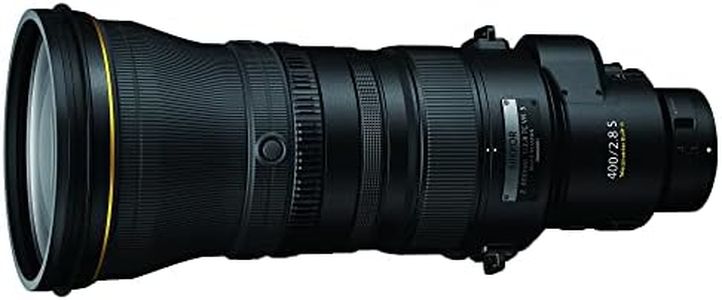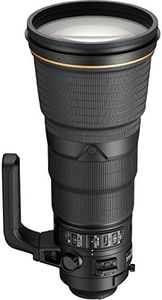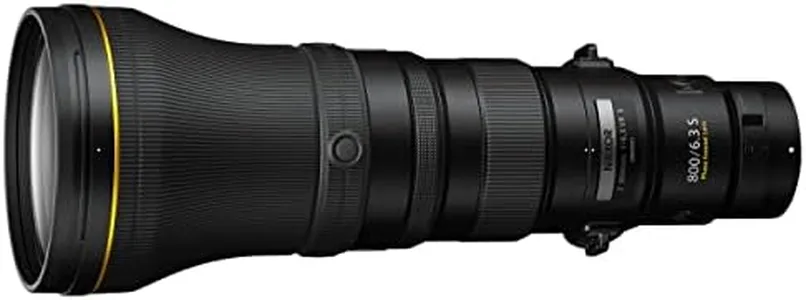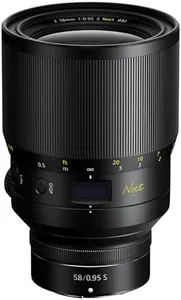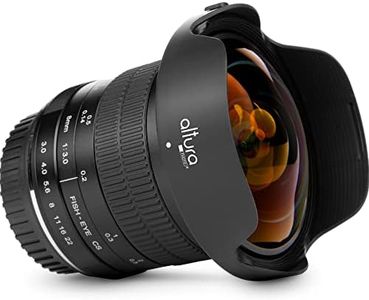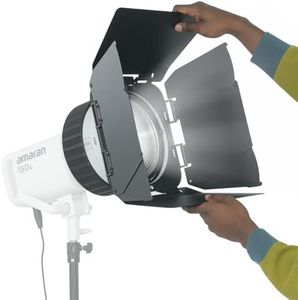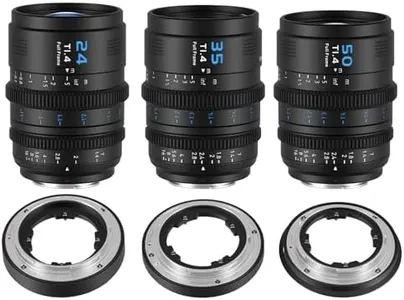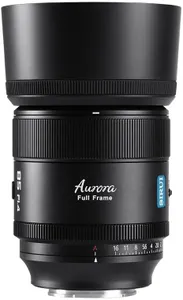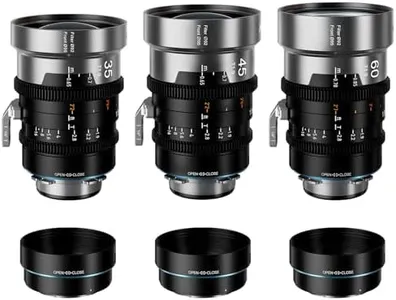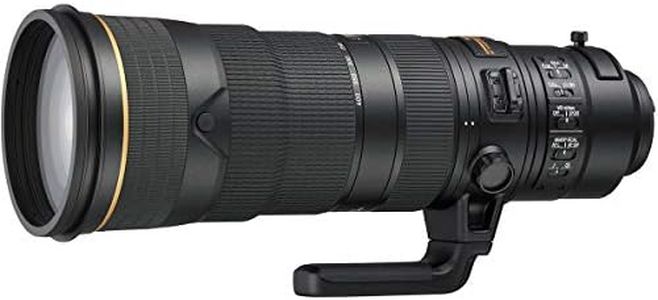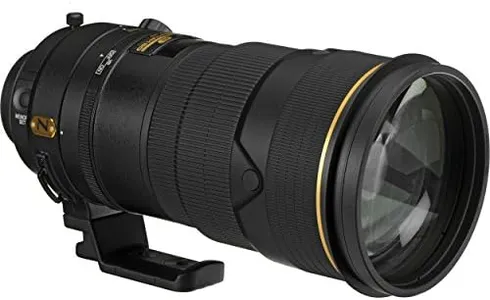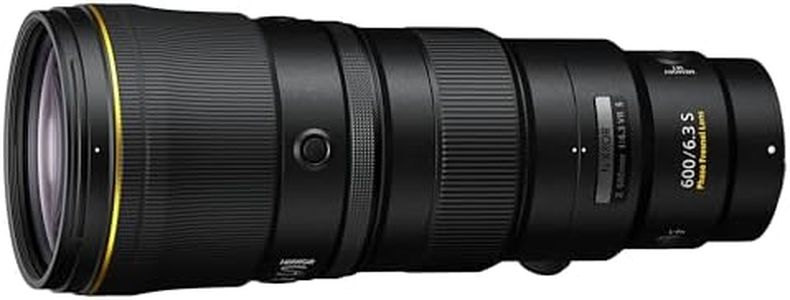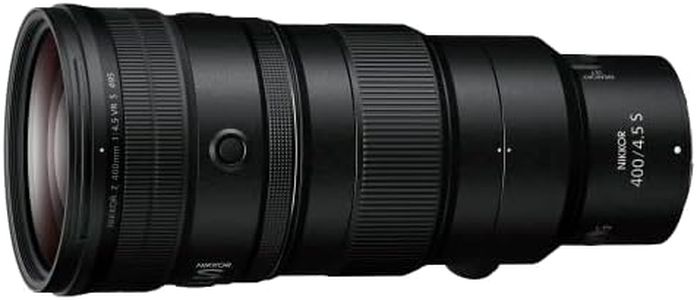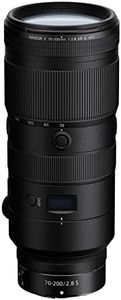10 Best Nikon Lenses 2026 in the United States
Our technology thoroughly searches through the online shopping world, reviewing hundreds of sites. We then process and analyze this information, updating in real-time to bring you the latest top-rated products. This way, you always get the best and most current options available.

Our Top Picks
Winner
NIKKOR Z 600mm f/4 TC VR S Black
The NIKKOR Z 600mm f/4 TC VR S is a super-telephoto lens designed for Nikon Z-mount cameras, perfect for wildlife, sports, or any distant subject photography. Its standout feature is the built-in 1.4x teleconverter, which extends the reach to 840mm without losing autofocus capability or needing extra gear—great for getting closer to the action. The lens has a bright f/4 aperture, though when the teleconverter is active, it changes to f/5.6, which is still quite good for low-light situations but not as bright as some prime lenses.
This lens includes advanced vibration reduction (VR) that can stabilize your shots by up to 5 stops, and even more when paired with certain Nikon cameras, helping to reduce blur from hand shake. Autofocus is fast, precise, and very quiet thanks to its Silky Swift VCM system, which is ideal for both stills and video, especially in quiet environments. The lens is thoughtfully designed with ergonomic controls and customizable buttons so you can adjust settings without taking your eye away from the viewfinder, enhancing usability in fast-paced shooting.
Weighing 7.19 pounds, it’s lighter than its F-mount predecessor by about half a pound, which helps when carrying it for long periods, though it’s still a substantial piece of equipment. The lens is clearly aimed at advanced photographers who need high-quality, long-distance zoom with professional features. Given its size, weight, and price, it may be more than casual users need. For those seeking a powerful telephoto lens with a built-in teleconverter and excellent stabilization for sharp images at long range, this lens is a solid choice.
NIKKOR Z 400mm f/2.8 TC VR S
Most important from
5 reviews
The NIKKOR Z 400mm f/2.8 TC VR S lens is a top-tier telephoto option that stands out for its impressive features. One of its major strengths is the built-in 1.4x teleconverter, which effectively extends the focal length to 560mm without sacrificing image quality or focus points. This makes it a fantastic choice for wildlife and sports photography, where capturing distant subjects sharply is crucial. The lens also boasts advanced Vibration Reduction (VR), providing up to 5.5 stops of stabilization, which dramatically helps with handheld shooting in challenging conditions.
Another notable feature is the Silky Swift VCM Autofocus system, which delivers fast and precise focusing with minimal noise. This is particularly beneficial for shooting in quiet environments or recording video, where sound can be an issue. The anti-glare performance is impressive too, thanks to Nikon's Meso Amorphous Coat and ARNEO Coat, allowing you to shoot in bright conditions with reduced ghosting and flare.
The lens is quite heavy and large, which may not be suitable for everyone, especially those looking for a more portable option. Additionally, its high-end features come with a premium price tag, which might deter budget-conscious photographers. While the customizable controls enhance usability, they may require some time to master, especially for beginners. This lens is perfect for professionals or serious enthusiasts who require top-quality performance in telephoto photography, but those seeking a lightweight, budget-friendly option might want to consider alternatives.
Most important from
5 reviews
Nikon AF-S FX NIKKOR 400mm f/2.8E FL ED Vibration Reduction Fixed Zoom Lens with Auto Focus for Nikon DSLR Cameras
Most important from
8 reviews
The Nikon AF-S FX NIKKOR 400mm f/2.8E FL ED is a premium telephoto lens designed for Nikon DSLR cameras with full-frame (FX) mounts. Its fixed 400mm focal length and wide f/2.8 aperture make it ideal for capturing distant subjects with excellent sharpness and beautiful background blur, which is especially useful for wildlife, sports, and action photography. The lens includes Nikon's Vibration Reduction (VR) technology, helping to reduce camera shake and deliver steadier shots, which is valuable when shooting handheld or in challenging conditions. Autofocus is fast and reliable, ensuring you can quickly lock onto moving subjects.
One notable aspect is its relatively heavy weight (over 8 pounds) and large size, which might make it less comfortable for casual use or long handheld shoots, so a monopod or tripod is recommended, and a monopod collar is included for easier support. This lens does not require batteries for operation, relying on the camera for power.
As a high-end lens with a premium build and impressive optics, it suits serious photographers who need superior telephoto performance rather than casual users, given its size, weight, and price. It is well-regarded with excellent customer reviews, reflecting its quality and performance.
Most important from
8 reviews
Buying Guide for the Best Nikon Lenses
Choosing the right Nikon lens can significantly enhance your photography experience. The right lens will depend on what you plan to shoot, your skill level, and your camera body. Understanding the key specifications of lenses will help you make an informed decision that best suits your needs.FAQ
Most Popular Categories Right Now

